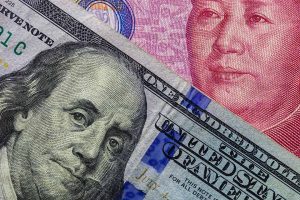
China’s Ministry of Commerce on April 4 issued a list of 106 U.S. products that could be subject to a 25 percent tariff on shipments into China. The list includes various forms of PE, PET, PVC, polycarbonate and a number of plastic products.
It’s unclear whether the tariffs would apply to recovered plastic pellets shipped to China, but even if they only cover prime materials, they have a bearing on recovered plastic pricing, which is closely linked to prime plastic capacity. S&P Global Platt’s compiled a detailed analysis of the potential impacts on various prime resins.
The American Chemistry Council issued a statement noting the stifling implications the tariffs would have on the chemical industry, which has made a number of expansions in the U.S. based on market forecasts before the tariffs came into play.
“Nearly $185 billion in new chemical factories, expansions and restarts of facilities around the country are predicated on current tariff schedules, and market shifts caused by tariff increases may convince investors to do business elsewhere,” the ACC said in a release. “We strongly urge the U.S. and China to reach a productive and meaningful agreement before any of the proposed tariff schedules go into effect.”
The Plastics Industry Association also called for a halt to the trade war, noting that “these proposed tariffs are already causing global market anxieties and will disrupt the supply chains of companies large and small if they take effect.”
According to the Brookings Institute, plastics manufacturing is the largest industry by employment that’s targeted by China’s tariffs.
Trade war backdrop
The proposed chemical tariffs came as the latest episode in a brewing clash between the U.S. and China.
The U.S. in March announced it would levy tariffs on imported steel and aluminum, firing the first shot of the trade tensions.
China responded with a list of 128 products that would receive 10 or 25 percent tariffs on. The list included scrap aluminum.
Separately, U.S. officials in March released the results of a long investigation into unfair Chinese practices regarding U.S. intellectual property, particularly in the technology sector. In early April, the office of U.S. Trade Representative released a list of 1,300 Chinese products that would be subject to additional tariffs coming into the U.S. The list was based on the results of the intellectual property study.
The very next day, China announced the list of 106 additional products subject to tariffs, including chemicals, bringing the total number of products targeted by China to 234. China also criticized the U.S. list of tariffs, which would cover some $50 billion of Chinese exports to the U.S.
The U.S. responded to China’s list by floating the possibility of new tariffs covering $100 billion in Chinese exports, and China responded in turn threatening equal retaliation.
Meanwhile, both China and the U.S. have filed complaints with the World Trade Organization, which will facilitate consultations between the countries in an effort resolve the trade dispute.
The steel and aluminum tariffs initially levied by the U.S. and the retaliatory tariffs from China on 128 products have all gone into effect. All of the other tariff proposals are awaiting implementation.
Photo credit: Eblis/Shutterstock
More stories about exports
- Malaysia’s import ban ‘very much up in the air’
- Some tariffs suspended, metal duties spur backlash
- Scrap plastic from Canada, Mexico subject to tariffs